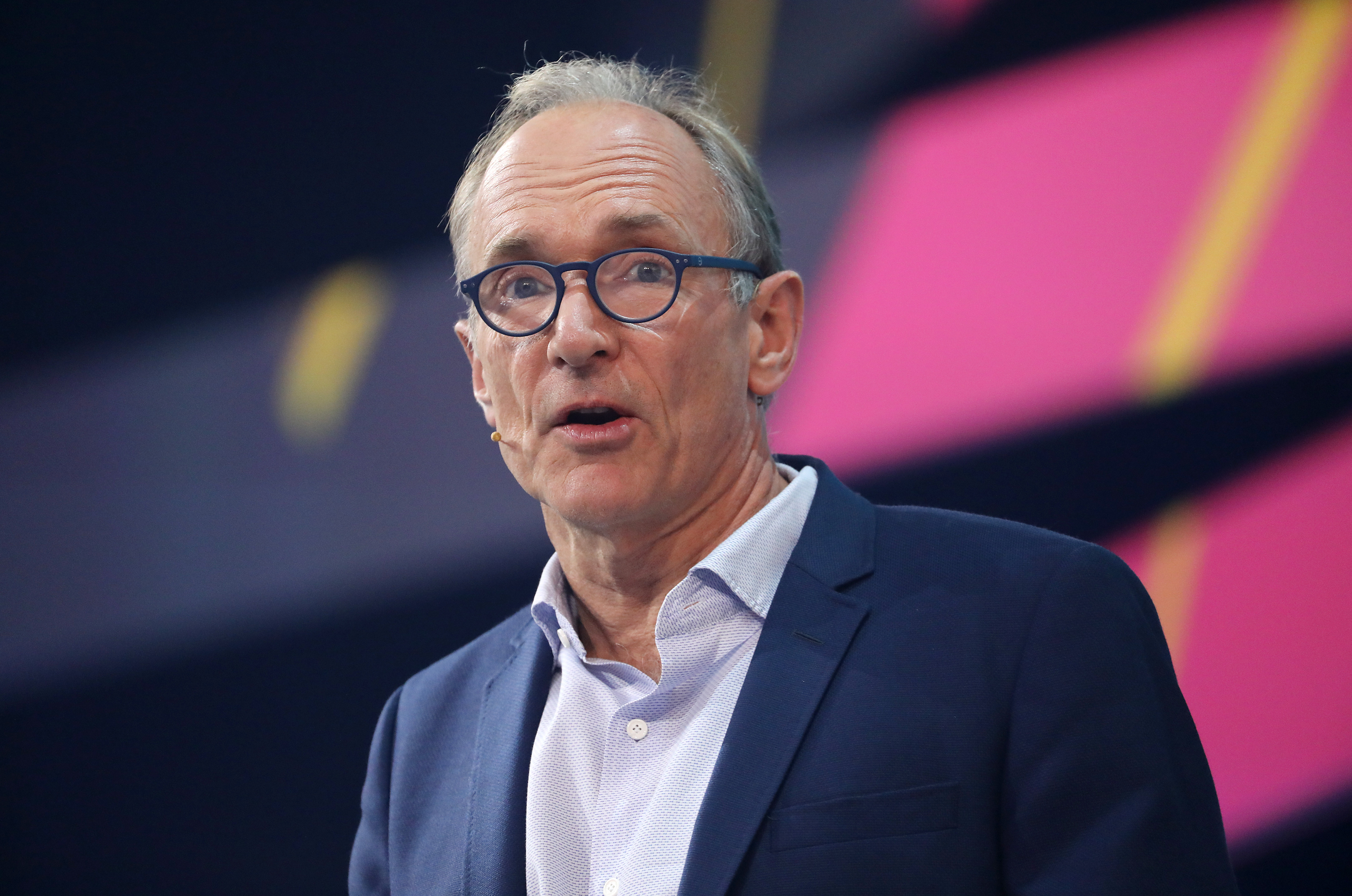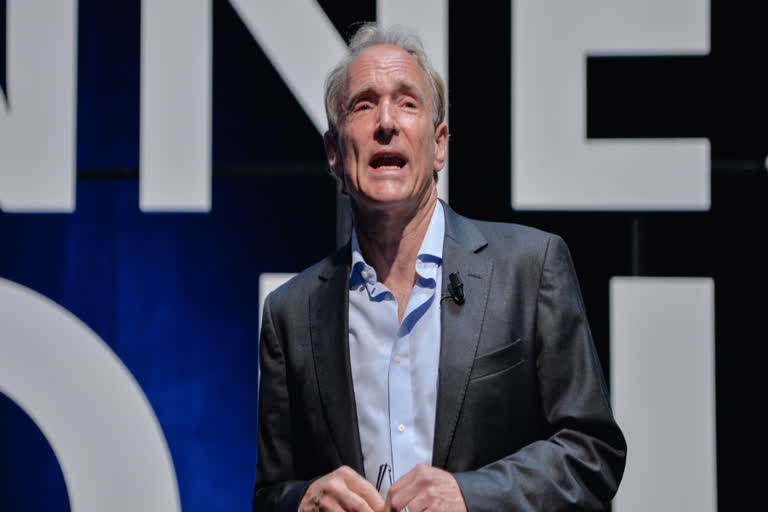Hyderabad: British computer scientist, Sir Tim Berners-Lee was born on June 8 1955. Computing came naturally to Berners-Lee, as both of his parents worked on the Ferranti Mark I, the first commercial computer. After graduating in 1976 from the University of Oxford, Berners-Lee designed computer software for two years at Plessey Telecommunications Ltd., located in Poole, Dorset, England. Following this, he had several positions in the computer industry, including a stint from June to December 1980 as a software engineering consultant at CERN, the European particle physics laboratory in Geneva.
Biography of Tim Berners Lee- Career and Research
Education
- After doing his A-Levels at Emanuel School, he went to Queen’s College, Oxford University, where he received a first-class degree in physics.
- After graduation, he gained employment for a printing firm in Plessey, Poole. From 1980, he was employed as an independent contractor at CERN in Switzerland.
- An essential part of his job involved sharing information with researchers in different geographical locations.
- To help this process, he suggested a project based on the use of hypertext. (a language for sharing text electronically) The first prototype was a system known as ENQUIRE.
- The Internet had been developed since the 1960s as a way to transfer inform
Inventor of World Wide Web
- In 1989, while working at CERN, the European Particle Physics Laboratory in Geneva, Switzerland, Tim Berners-Lee proposed a global hypertext project, to be known as the World Wide Web.
- Based on the earlier "Enquire" work, it was designed to allow people to work together by combining their knowledge in a web of hypertext documents.
- He wrote the first World Wide Web server, "HTTP", and the first client, "WorldWideWeb", a what-you-see-is-what-you-get hypertext browser/editor that ran in the NeXTStep environment.
- This work was started in October 1990, and the program "WorldWideWeb" was first made available within CERN in December, and on the Internet at large in the summer of 1991.
- Through 1991 and 1993, Tim continued working on the design of the Web, coordinating feedback from users across the Internet. His initial specifications of URIs, HTTP and HTML were refined and discussed in larger circles as the Web technology spread.
- Tim Berners-Lee graduated from Queen's College at Oxford University, England, in 1976. While there, he built his first computer with a soldering iron, TTL gates, an M6800 processor and an old television.
- He spent two years with Plessey Telecommunications Ltd (Poole, Dorset, UK), a major UK Telecom equipment manufacturer, working on distributed transaction systems, message relays, and bar code technology.

- In 1978 Tim left Plessey to join D.G Nash Ltd (Ferndown, Dorset, UK), where he wrote among other things typesetting software for intelligent printers and a multitasking operating system.
- A year and a half spent as an independent consultant included a six-month stint (Jun-Dec 1980) as a consultant software engineer at CERN.
- While there, he wrote for his own private use his first program for storing information including using random associations. Named "Enquire" and never published, this program formed the conceptual basis for the future development of the World Wide Web.
- From 1981 until 1984, Tim worked at John Poole's Image Computer Systems Ltd, with technical design responsibility. Work here included real-time control firmware, graphics and communications software, and a generic macro language. In 1984, he took up a fellowship at CERN, to work on distributed real-time systems for scientific data acquisition and system control.
- Among other things, he worked on FASTBUS system software and designed a heterogeneous remote procedure call system.
- In 1994, Tim founded the World Wide Web Consortium at the then, Laboratory for Computer Science (LCS), which merged with the Artificial Intelligence Lab in 2003 to become the Computer Science and Artificial Intelligence Laboratory (CSAIL) at the Massachusetts Institute of Technology (MIT).
- Since that time, he has served as the Director of the World Wide Web Consortium, a Web standards organization that develops interoperable technologies (specifications, guidelines, software, and tools) to lead the Web to its full potential.
- The Consortium has host sites located at MIT, at ERCIM in Europe, and at Keio University in Japan as well as offices around the world.
- In 1999, he became the first holder of the 3COM Founders chair. He is currently the 3COM Founders Professor of Engineering in the School of Engineering, with a joint appointment in the Department of Electrical Engineering and Computer Science at CSAIL, where he also heads the Decentralized Information Group (DIG).
- In December 2004 he was named a Professor in the Computer Science Department at the University of Southampton, UK. He was co-Director of the Web Science Trust, launched in 2006 as the Web Science Research Initiative, to help create the first multidisciplinary research body to examine the World Wide Web and offer the practical solutions needed to help guide its future use and design.
- He is a Director of the World Wide Web Foundation, started in 2008 to fund and coordinate efforts to further the potential of the Web to benefit humanity.
- In June 2009 then Prime Minister Gordon Brown announced that Sir Tim Berners-Lee would work with the UK Government to help make data more open and accessible on the Web, building on the work of the Power of Information Task Force.
- Sir Tim is currently a member of The Public Sector Transparency Board to drive forward the UK Government’s transparency agenda.
The first “killer application” of the Web at CERN was the laboratory’s telephone directory—a mundane beginning for one of the technological wonders of the computer age.
Awards and honours
- Berners-Lee has received many awards and honours. He was knighted by Queen Elizabeth II in the 2004 New Year Honours "for services to the global development of the Internet" and was invested formally on 16 July 2004.
- On 13 June 2007, he was appointed to the Order of Merit (OM), an order restricted to 24 (living) members. Bestowing membership of the Order of Merit is within the personal purview of the Queen, and does not require recommendation by ministers or the Prime Minister.
- He was elected a Fellow of the Royal Society (FRS) in 2001. He was also elected as a member of the National Academy of Engineering in 2007.
- He has been conferred honorary degrees from a number of Universities around the world, including Manchester (his parents worked on the Manchester Mark 1 in the 1940s), Harvard and Yale.
- In 2012, Berners-Lee was among the British cultural icons selected by artist Sir Peter Blake to appear in a new version of his most famous artwork – the Beatles' Sgt. Pepper's Lonely Hearts Club Band album cover – to celebrate the British cultural figures of his life that he most admires to mark his 80th birthday.
- In 2013, he was awarded the inaugural Queen Elizabeth Prize for Engineering. On 4 April 2017, he received the 2016 ACM Turing Award "for inventing the World Wide Web, the first web browser, and the fundamental protocols and algorithms allowing the Web to scale".
- He is the author, with Mark Fischetti, of the book Weaving the Web on the past, present and future of the Web.
- His numerous other honours included the National Academy of Engineering’s prestigious Charles Stark Draper Prize (2007). Berners-Lee was the author, along with Mark Fischetti, of Weaving the Web: The Original Design and Ultimate Destiny of the World Wide Web (2000).
Also Read: Samsung likely to launch Galaxy M21 Prime Edition in India



